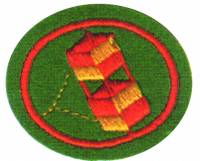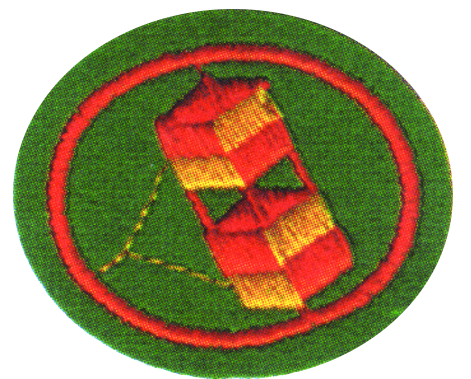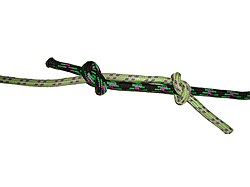Difference between revisions of "AY Honors/Kites/Answer Key/es"
From Pathfinder Wiki
(Created page with "</noinclude> {{:Adventist Youth Honors Answer Book/Knot/Fisherman's_bend/es}}") |
|||
| (35 intermediate revisions by 2 users not shown) | |||
| Line 1: | Line 1: | ||
| − | + | {{HonorSubpage}} | |
| − | |||
| − | |||
| − | {{ | ||
| − | |||
| − | |||
| − | |||
| − | |||
| − | |||
| − | |||
| − | |||
| − | }} | ||
| − | {{Honor Master | + | <!--{{Honor Master|honor={{#titleparts:{{PAGENAME}}|1|3}}|master=Recreation}}--> |
| − | |||
| − | |||
| − | |||
| − | |||
| − | |||
{{ansreq|page={{#titleparts:{{PAGENAME}}|2|1}}|num=1}} | {{ansreq|page={{#titleparts:{{PAGENAME}}|2|1}}|num=1}} | ||
<noinclude></noinclude> | <noinclude></noinclude> | ||
<!-- 1. ¿Cuándo fueron hechas las cometas por primera vez? ¿Cuándo fueron voladas por primera vez? Nombrar al menos tres formas en que las cometas han contribuido en la investigación científica y decir cómo cada uno ha afectado al mundo en que vivimos. Contar la historia del norteamericano Benjamín Franklin y su cometa. --> | <!-- 1. ¿Cuándo fueron hechas las cometas por primera vez? ¿Cuándo fueron voladas por primera vez? Nombrar al menos tres formas en que las cometas han contribuido en la investigación científica y decir cómo cada uno ha afectado al mundo en que vivimos. Contar la historia del norteamericano Benjamín Franklin y su cometa. --> | ||
| − | {{clear}} | + | {{clear}} |
{{clear}} | {{clear}} | ||
| Line 28: | Line 12: | ||
{{clear}} | {{clear}} | ||
| − | |||
| + | {{clear}} | ||
{{clear}} | {{clear}} | ||
| − | {{clear}} | + | {{clear}} |
{{clear}} | {{clear}} | ||
| − | |||
| − | |||
{{clear}} | {{clear}} | ||
| Line 51: | Line 33: | ||
{{ansreq|page={{#titleparts:{{PAGENAME}}|2|1}}|num=2}} | {{ansreq|page={{#titleparts:{{PAGENAME}}|2|1}}|num=2}} | ||
<noinclude></noinclude> | <noinclude></noinclude> | ||
| − | <!-- 2. | + | <!-- 2. Mencionar algunas de las formas que las cometas podrían ser utilizadas en la actualidad. --> |
| − | |||
| − | |||
| − | |||
| − | |||
| − | |||
| − | |||
<noinclude></noinclude> | <noinclude></noinclude> | ||
| Line 63: | Line 39: | ||
{{ansreq|page={{#titleparts:{{PAGENAME}}|2|1}}|num=3}} | {{ansreq|page={{#titleparts:{{PAGENAME}}|2|1}}|num=3}} | ||
<noinclude></noinclude> | <noinclude></noinclude> | ||
| − | <!-- 3. | + | <!-- 3. Explicar brevemente cómo volar cometas. --> |
{{clear}} | {{clear}} | ||
| Line 71: | Line 47: | ||
{{ansreq|page={{#titleparts:{{PAGENAME}}|2|1}}|num=4}} | {{ansreq|page={{#titleparts:{{PAGENAME}}|2|1}}|num=4}} | ||
<noinclude></noinclude> | <noinclude></noinclude> | ||
| − | <!-- 4. | + | <!-- 4. Definir los siguientes términos: --> |
<noinclude></noinclude> | <noinclude></noinclude> | ||
{{ansreq|page={{#titleparts:{{PAGENAME}}|2|1}}|num=4a}} | {{ansreq|page={{#titleparts:{{PAGENAME}}|2|1}}|num=4a}} | ||
| Line 125: | Line 101: | ||
{{ansreq|page={{#titleparts:{{PAGENAME}}|2|1}}|num=5}} | {{ansreq|page={{#titleparts:{{PAGENAME}}|2|1}}|num=5}} | ||
<noinclude></noinclude> | <noinclude></noinclude> | ||
| − | <!-- 5. | + | <!-- 5. ¿Cuál es una causa común del fracaso de una cometa? --> |
| − | |||
| − | |||
| − | |||
| − | |||
<noinclude></noinclude> | <noinclude></noinclude> | ||
| Line 135: | Line 107: | ||
{{ansreq|page={{#titleparts:{{PAGENAME}}|2|1}}|num=6}} | {{ansreq|page={{#titleparts:{{PAGENAME}}|2|1}}|num=6}} | ||
<noinclude></noinclude> | <noinclude></noinclude> | ||
| − | <!-- 6. | + | <!-- 6. ¿Qué se debe hacer cuando una cometa hace círculos durante el vuelo? --> |
| − | |||
| − | |||
| − | |||
| − | |||
| − | |||
| − | |||
| − | |||
<noinclude></noinclude> | <noinclude></noinclude> | ||
| Line 148: | Line 113: | ||
{{ansreq|page={{#titleparts:{{PAGENAME}}|2|1}}|num=7}} | {{ansreq|page={{#titleparts:{{PAGENAME}}|2|1}}|num=7}} | ||
<noinclude></noinclude> | <noinclude></noinclude> | ||
| − | <!-- | + | <!-- ¿Por qué algunas cometas necesitan una cola? --> |
| − | |||
<noinclude></noinclude> | <noinclude></noinclude> | ||
| Line 155: | Line 119: | ||
{{ansreq|page={{#titleparts:{{PAGENAME}}|2|1}}|num=8}} | {{ansreq|page={{#titleparts:{{PAGENAME}}|2|1}}|num=8}} | ||
<noinclude></noinclude> | <noinclude></noinclude> | ||
| − | <!-- 8. | + | <!-- 8. Conocer al menos tres normas de seguridad para volar cometas. --> |
| − | |||
{{clear}} | {{clear}} | ||
| Line 164: | Line 127: | ||
{{ansreq|page={{#titleparts:{{PAGENAME}}|2|1}}|num=9}} | {{ansreq|page={{#titleparts:{{PAGENAME}}|2|1}}|num=9}} | ||
<noinclude></noinclude> | <noinclude></noinclude> | ||
| − | <!-- 9. | + | <!-- 9. Hacer lo siguiente: --> |
<noinclude></noinclude> | <noinclude></noinclude> | ||
{{ansreq|page={{#titleparts:{{PAGENAME}}|2|1}}|num=9a}} | {{ansreq|page={{#titleparts:{{PAGENAME}}|2|1}}|num=9a}} | ||
<noinclude></noinclude> | <noinclude></noinclude> | ||
| − | |||
| − | |||
{{clear}} | {{clear}} | ||
| Line 177: | Line 138: | ||
{{ansreq|page={{#titleparts:{{PAGENAME}}|2|1}}|num=9b}} <!--T:27--> | {{ansreq|page={{#titleparts:{{PAGENAME}}|2|1}}|num=9b}} <!--T:27--> | ||
<noinclude></noinclude> | <noinclude></noinclude> | ||
| − | {{: | + | {{:AY Honors/Knot/Fisherman's_bend/es}} |
<noinclude></noinclude> | <noinclude></noinclude> | ||
| Line 184: | Line 145: | ||
{{ansreq|page={{#titleparts:{{PAGENAME}}|2|1}}|num=10}} | {{ansreq|page={{#titleparts:{{PAGENAME}}|2|1}}|num=10}} | ||
<noinclude></noinclude> | <noinclude></noinclude> | ||
| − | <!-- 10. | + | <!-- 10. Hacer volar con éxito dos de los siguientes cometas: --> |
| − | + | {{clear}} | |
<noinclude></noinclude> | <noinclude></noinclude> | ||
{{ansreq|page={{#titleparts:{{PAGENAME}}|2|1}}|num=10a}} <!--T:30--> | {{ansreq|page={{#titleparts:{{PAGENAME}}|2|1}}|num=10a}} <!--T:30--> | ||
<noinclude></noinclude> | <noinclude></noinclude> | ||
| − | |||
| − | + | {{clear}} | |
<noinclude></noinclude> | <noinclude></noinclude> | ||
| Line 199: | Line 159: | ||
{{ansreq|page={{#titleparts:{{PAGENAME}}|2|1}}|num=10b}} <!--T:32--> | {{ansreq|page={{#titleparts:{{PAGENAME}}|2|1}}|num=10b}} <!--T:32--> | ||
<noinclude></noinclude> | <noinclude></noinclude> | ||
| − | |||
| − | + | {{clear}} | |
<noinclude></noinclude> | <noinclude></noinclude> | ||
| Line 207: | Line 166: | ||
{{ansreq|page={{#titleparts:{{PAGENAME}}|2|1}}|num=10c}} <!--T:34--> | {{ansreq|page={{#titleparts:{{PAGENAME}}|2|1}}|num=10c}} <!--T:34--> | ||
<noinclude></noinclude> | <noinclude></noinclude> | ||
| − | |||
| − | + | {{clear}} | |
| − | + | ||
| − | |||
<noinclude></noinclude> | <noinclude></noinclude> | ||
| Line 217: | Line 174: | ||
{{ansreq|page={{#titleparts:{{PAGENAME}}|2|1}}|num=10d}} <!--T:36--> | {{ansreq|page={{#titleparts:{{PAGENAME}}|2|1}}|num=10d}} <!--T:36--> | ||
<noinclude></noinclude> | <noinclude></noinclude> | ||
| − | |||
| − | + | {{clear}} | |
| − | |||
<noinclude></noinclude> | <noinclude></noinclude> | ||
| Line 226: | Line 181: | ||
{{ansreq|page={{#titleparts:{{PAGENAME}}|2|1}}|num=10e}} <!--T:38--> | {{ansreq|page={{#titleparts:{{PAGENAME}}|2|1}}|num=10e}} <!--T:38--> | ||
<noinclude></noinclude> | <noinclude></noinclude> | ||
| − | |||
| − | |||
| − | |||
| − | |||
| − | |||
<noinclude></noinclude> | <noinclude></noinclude> | ||
| Line 236: | Line 186: | ||
{{ansreq|page={{#titleparts:{{PAGENAME}}|2|1}}|num=10f}} <!--T:39--> | {{ansreq|page={{#titleparts:{{PAGENAME}}|2|1}}|num=10f}} <!--T:39--> | ||
<noinclude></noinclude> | <noinclude></noinclude> | ||
| − | |||
| − | |||
| − | |||
| − | |||
| − | |||
| − | + | {{clear}} | |
<noinclude></noinclude> | <noinclude></noinclude> | ||
| Line 248: | Line 193: | ||
{{ansreq|page={{#titleparts:{{PAGENAME}}|2|1}}|num=10g}} <!--T:41--> | {{ansreq|page={{#titleparts:{{PAGENAME}}|2|1}}|num=10g}} <!--T:41--> | ||
<noinclude></noinclude> | <noinclude></noinclude> | ||
| − | |||
| − | + | {{clear}} | |
| − | + | {{clear}} | |
| − | |||
| − | |||
| − | |||
| − | + | {{clear}} | |
| − | |||
| − | |||
<noinclude></noinclude> | <noinclude></noinclude> | ||
| Line 265: | Line 204: | ||
{{CloseReq}} <!-- 10 --> | {{CloseReq}} <!-- 10 --> | ||
<noinclude></noinclude> | <noinclude></noinclude> | ||
| − | == | + | ==Referencias== |
| − | |||
<noinclude></noinclude> | <noinclude></noinclude> | ||
| − | + | {{CloseHonorPage}} | |
Latest revision as of 16:07, 21 September 2021
1
¿Cuándo fueron hechas las cometas por primera vez? ¿Cuándo fueron voladas por primera vez? Nombrar al menos tres formas en que las cometas han contribuido en la investigación científica y decir cómo cada uno ha afectado al mundo en que vivimos. Contar la historia del norteamericano Benjamín Franklin y su cometa.
2
Mencionar algunas de las formas que las cometas podrían ser utilizadas en la actualidad.
3
Explicar brevemente cómo volar cometas.
4
Definir los siguientes términos:
4a
Columna
4b
Varilla longitudinal
4c
Conducto de ventilación
4d
Amarre (hilo)
4e
Cubierta
4f
Marco/armazón
4g
Cola
4h
Quilla
4i
Cuerda para volar
4j
Brida
4k
Carrete
4l
5
¿Cuál es una causa común del fracaso de una cometa?
6
¿Qué se debe hacer cuando una cometa hace círculos durante el vuelo?
7
¿Por qué algunas cometas necesitan una cola?
8
Conocer al menos tres normas de seguridad para volar cometas.
9
Hacer lo siguiente:
9a
Enrollar correctamente la cuerda de una vara
9b
Atar una línea/cuerda rota con el nudo del pescado
| Nudo pescador |
|---|
|
Uso: El nudo del pescador es una vuelta especializada. Se compone de dos nudos simples envueltos alrededor de uno al otro. Funciona bien para la unión de las líneas finas, duras o resbaladizas.
Se requiere poca destreza para atarla y se utiliza usualmente en materiales difíciles. Cuando se aprieta, se hace bastante compacto y los extremos libres pueden ser cortados muy cerca del nudo. Esto hace que sea muy útil para una línea de pesca porque es menos probable que atasque una caña de pescar como lo haría muchas otras vueltas, y es más fácil para atar con manos frías y húmedas.
Cómo amarrar:
|
10
Hacer volar con éxito dos de los siguientes cometas:
10a
Cometa trineo flexible
10b
Cometa plana
10c
Cometa estilo diamante con dos cañas
10d
Cometa ala delta
10e
Cometa malaya
10f
Cometa celular (cuadrada)
10g
Cometa tetraédrica



